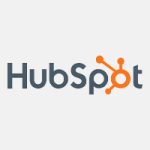Customer Relationship Management Scoring Criteria
Client Data Management and Accessibility (5 points)
Description: The ability to store, organize, and easily access client information, such as contact details, policies, and interaction history.
Considerations: Is client data easy to manage and retrieve? Does the system provide a 360-degree view of client interactions?
Task and Workflow Automation (5 points)
Description: The CRM’s ability to automate tasks and workflows, such as follow-up reminders, renewals, and policy updates.
Considerations: How effective is the CRM at automating routine tasks to reduce manual effort?
Communication and Interaction Tracking (5 points)
Description: The system’s ability to track all communications with clients across different channels (e.g., email, phone calls, meetings).
Considerations: Does the CRM capture and organize communication history effectively? Is it easy to see past interactions with clients?
Reporting and Analytics (5 points)
Description: The quality and customization of reports on client activity, retention, and overall relationship health.
Considerations: How detailed and customizable are the CRM’s reports? Are there insights into client retention and engagement?
Integration with Other Tools (5 points)
Description: The ability of the CRM to integrate with other tools, such as email marketing, quoting systems, or data analytics platforms.
Considerations: Does the CRM integrate well with other essential business tools? How seamless is the integration process?
Pricing and Value for Money (5 points)
Description: The pricing model and the overall value offered by the BMS in relation to its features and functionality.
Considerations: Is the pricing transparent and reasonable based on the features offered? Does it provide good value for money in terms of scalability and
usability?









